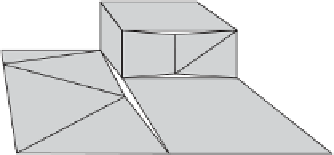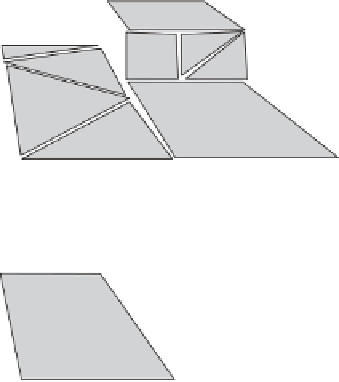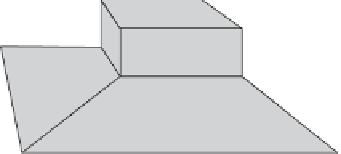Graphics Reference
In-Depth Information
1. Original polygon soup model
2. After welding vertices
3. After fixing T-junctions
4. After merging co-planar faces
5. Final model after decomposition
into convex (quadrilateral) pieces
Figure 12.1
The key steps in turning a polygon soup into a well-formed robust mesh: vertex
welding, t-junction removal, merging of co-planar faces, and decomposition into convex
pieces.
A nontrivial problem is choosing the representative point that two or more vertices
become after welding. To illustrate the issues arising, consider a number of vertices
in a line, equidistantly spaced, with each pair of vertices being within the welding
distance (Figure 12.3). Assume a process in which the set of vertices is iterated over
and each vertex is compared against previously encountered vertices for welding. If no
earlier vertex is within the welding distance, the vertex can be kept as is, but if a vertex
is found within the welding distance some possible options include the following.
1. Replacing the current vertex with the previously kept vertex
2. Replacing the previously kept vertex with the current vertex
3. Replacing both vertices with one halfway between them








